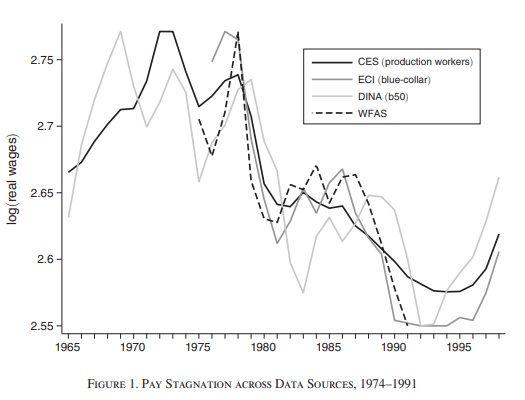Using new establishment-by-occupation microdata, we show that the use of discretionary wage setting significantly expanded in the 1970s and 1980s. Increasingly, wages for blue-collar workers were not standardized by job title or seniority but instead subject to managerial discretion. When establishments abandoned standardized pay rates, wages fell, particularly for the lowest-paid workers in a job and for those in establishments that previously paid above market rates. This shift away from standardized pay rates, in context of a broader decline in worker bargaining power, accelerated the decline in real wages experienced by blue-collar workers in the 1980s.
Read the full article in American Economic Journal: Applied Economics
Citation
Massenkoff, Maxim and Nathan Wilmers. 2023. "Wage Stagnation and the Decline of Standardized Pay Rates, 1974–1991." American Economic Journal: Applied Economics, 15 (1): 474-507.
DOI: 10.1257/app.20200819

